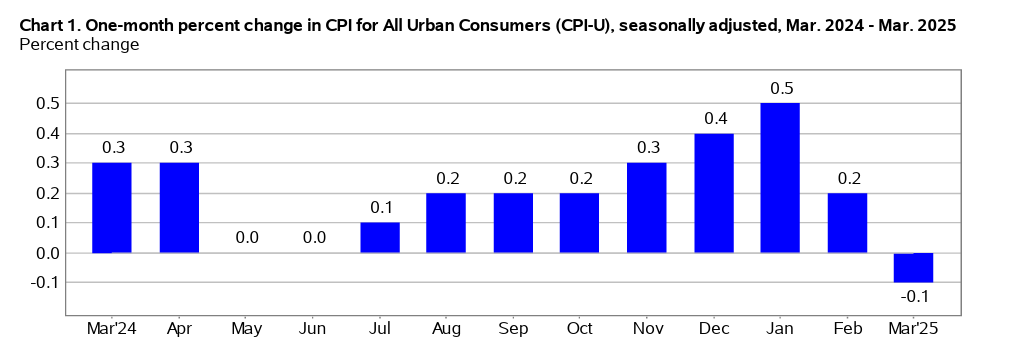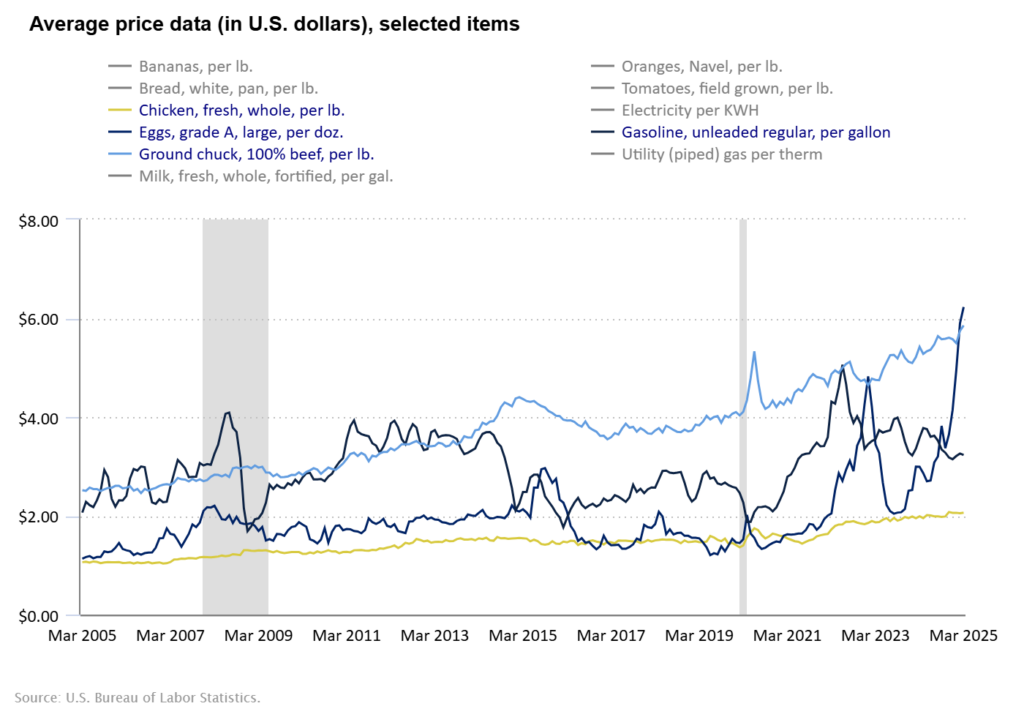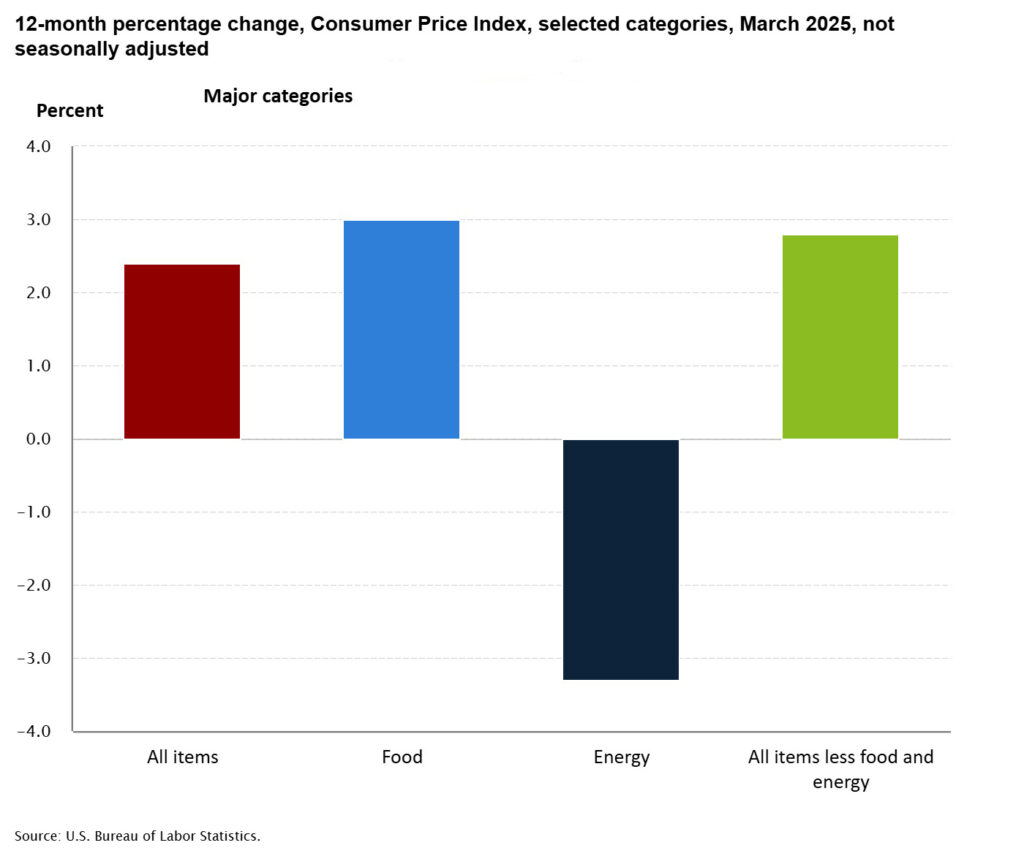Inflation eased last month to 2.4%, as declines in energy and transportation offset increases in food, according to the April 10 consumer price index report from the Bureau of Labor Statistics (BLS), which measures average price changes in goods and services.
This is the lowest annual increase since September but still leaves inflation above the Federal Reserve’s 2% goal. Economists had forecast a March CPI change of 2.6%.

“The index for energy fell 2.4 percent in March, as a 6.3-percent decline in the index for gasoline more
than offset increases in the indexes for electricity and natural gas. The food index, in contrast, rose 0.4
percent in March as the food at home index increased 0.5 percent and the food away from home index
rose 0.4 percent over the month,” the BLS said in the report.
- ◾Monthly Change (Seasonally Adjusted): The CPI decreased 0.1% in March, following a 0.2% increase in February.
- ◾Year-over-Year Change: The all items index rose 2.4% for the 12 months ending March, down from 2.8% over the 12 months ending February.
- ◾Core CPI: The core CPI, which excludes food and energy prices, is expected to have risen 0.3% month-over-month and 3.0% year-over-year.
Indexes that increased over the month:
- ◾personal care
- ◾medical care
- ◾education
- ◾apparel
- ◾new vehicles
Indexes that decreased in March:
- ◾airline fares
- ◾motor vehicle insurance
- ◾used cars and trucks
- ◾recreation
Airline fares declined 5.3% in March and motor vehicle insurance dropped 0.8% and prescription drugs fell 2%. Shelter increased just 0.2% in March and used vehicle prices dropped 0.7% compared to new vehicle’s 0.1% increase (ahead of tariffs).
The index for food increased 0.4 percent in March, after rising 0.2 percent in February. The food at home index rose 0.5 percent over the month as four of the six major grocery store food group indexes increased.
Driven primarily by a 5.9-percent increase in the index for eggs, the index for meats, poultry, fish, and eggs rose 1.3 percent in March. The price of eggs now averages over $6 per dozen.

The beef index also increased over the month, rising 1.2 percent. The index for other food at home increased 0.5 percent in March and the index for dairy and related products rose 1.0 percent. The nonalcoholic beverages index increased 0.6 percent over the month.
Core inflation, which strips out the more volatile costs of food and gas, climbed 0.1% over February’s 0.2% monthly gain and ahead of economists’ expectations of a 0.3% increase.

Although Trump has paused most tariffs (for now) after a reversal on April 9, the 10% baseline duties that went into effect last weekend for most countries remain in place, in addition to tariffs on China. Mexico and Canada still face a separate set of duties related to fentanyl, while separate industry-specific tariffs on steel, aluminum, and autos remain unchanged.
“This could easily be the last really good CPI day for a while,” Claudia Sahm, former Federal Reserve Board economist and current chief economist at Century Advisors, told Yahoo Finance.
“The tariffs that have gone into effect [but] it’s going to take time for it to show up in the data,” Sahm said.












